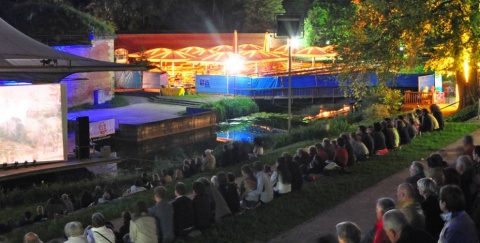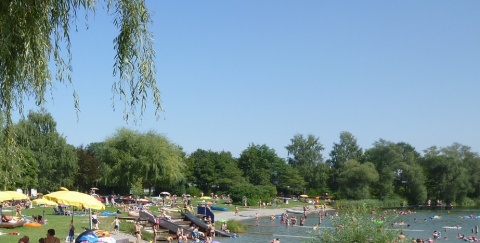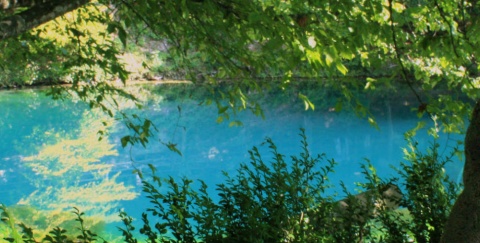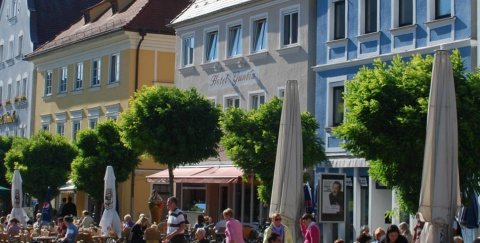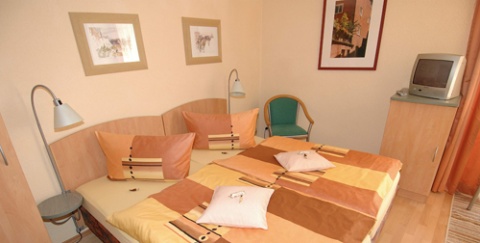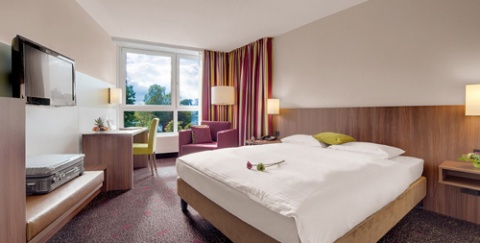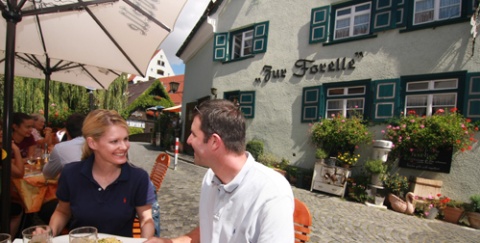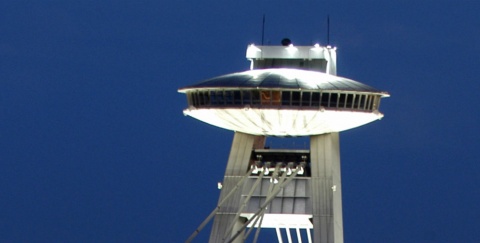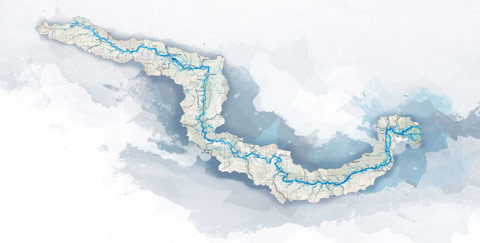
Ulm is a university city in Baden-Württemberg. It lies on the Danube on the south-eastern edge of the Swabian Alb along the border with Bavaria. It has a population of around 118,000 and together with Neu-Ulm forms one of Germany's dual cities, half in one state and half in another. Ulm is the largest city in the Tübingen administrative region and the Danube-Iller region, which also includes parts of the Bavarian region of Swabia.
City Highlights
Ulm Minster, the 'finger of God' with the highest church tower in the world, is the dual town's predominant building. And the square on which it stands is an endlessly fascinating place that offers a great mix of historical and modern architecture. But there is definitely more to Ulm than the Minster and Münsterplatz square, and at a stone's throw away, the beautiful town hall is one of the reasons why. On the facade is an ornate astronomical clock made in 1520. In the stairwell of the town hall, visitors can look up and see a replica of the flying machine built by the legendary 'tailor of Ulm'. Unfortunately his attempts at flying two hundred years ago were not crowned with success. On the crucial day there the winds were not favourable and his 'flight' ended in the Danube. Further ahead are the Weinhof, the ancient Steinhaus (stone house), the Romanesque Chapel of St. Nicholas and the 17th-century Schwörhaus (oath house).Every year on Schwörmontag, a public holiday in Ulm, the town's mayor stands on the Schwörhaus balcony and repeats the historic oath of 1397 to uphold the constitution. Set in an idyllic location at the confluence of the Blau and Danube rivers is the fishermen's quarter. Predominantly inhabited by craftsmen in the Middle Ages, it is the main historical ensemble in the heart of Ulm's old quarter. Its ancient lanes, winding passageways, half-timbered houses, bridges and jetties give a real impression of what medieval life must have been like – amid the buzz of a modern city.
Visionary urban development in Ulm's new centre: the removal of the highway through Ulm provided a once-in-a-lifetime opportunity to create something new in the heart of the city. The futuristic buildings between Münsterplatz square and the town hall, such as the marvellous Stadthaus by celebrated architect Richard Meier, the Sparkasse building, Weishaupt art gallery, the municipal library known as the 'glass pyramid', the Münstertor shopping centre and the new 'Obere Stube', strike a deliberate contrast to the nearby historical minster and town hall with their modern mode of expression.
A distinctive feature of Ulm's townscape are two towers that form part of the old town fortifications: the Gänseturm (goose tower) and the Metzgerturm (butchers' tower), built in 1345 and better known as the Leaning Tower of Ulm. The story behind the tower is typical of Ulm. Legend has it, the tower got its name from the butchers who added sawdust to their sausage mix. When the townspeople realised this, they locked the culprits in the tower. And as the corpulent butchers huddled together in fear in a corner upon the angry major's entrance, the tower is supposed to have tilted. In actual fact, the tower is leaning because it stands on a former swamp.
Accommodation and restaurants in Ulm
The convivial hospitality for which Swabia and Bavaria are famous can be experienced in hotels, restaurants and cafés all around Ulm/Neu Ulm. As you might expect in a city of this calibre, the choice of accommodation is first-class. You're never far from a restaurant serving German cuisine and Swabian specialities, but there's plenty of international cuisine too. For a unique experience, head to Restaurant Grenzstube where the border between Bavaria and Baden-Württemberg runs right through the dining room; at some tables, guests can sit in two different federal states.
Activities in Ulm
Ulm is the starting point for the Upper Swabian Baroque Route, which is around 500 kilometres long. Beginning at Ulm Minster it continues towards Lake Constance with extensions into Austria and Switzerland. One of the highlights on the Baroque Route is Wiblingen Abbey, located on the outskirts of Ulm, which has an incredibly beautiful library hall. The archaeological collection at Ulm Museum boasts the Löwenmensch (lion man), the oldest animal/human sculpture in the world dating back approximately 40,000 years. There is also a collection of major post-1945 European and American works of art.
Ulm's compact city centre is retail heaven, with some 9,000 people an hour hot-footing it to Hirschstrasse, one of Germany's most popular shopping streets. The tantalising mix of specialist shops, big department stores and designer boutiques caters for every need, and the parking information system and easy access by public transport makes getting around nice and easy. Out of town, the Blautal centre (37,500m²) with about 100 stores is one of southern Germany's biggest shopping malls.
Ulm: art, architecture and festivals
There have been two Ulms – Ulm and Neu-Ulm – ever since 1810 when the city was transferred to Württemberg, but the districts on the eastern bank of the Danube remained with Bavaria. This means double the experience: big-city buzz, amazing architecture and historical charm on one side of the river, while the smaller town on the other side offers fortifications, a stunning water tower and traditional brewhouses. Besides being the city of Albert Einstein's birth, Ulm is known for its unique cultural treasures including the 'lion man' (the world's oldest anthropomorphic sculpture), the beautifully restored fishermen's quarter and Ulm minster, with the world's tallest church tower. The museums here are also in a league of their own. The collection at Weishaupt art gallery, for instance, features Warhol and Lichtenstein. Long-established festivals and warm hospitality add to the singular charm of the Danube's 'double city'.
Interested? Follow this link for the latest deals in Ulm and Neu-Ulm:
http://www.tourismus.ulm.de/web/en/uebernachten-und-essen/hotels/pauschalreise/pauschalreise.php
Did you know? According to the Guinness Book of Records, the world's most crooked hotel is to be found in Ulm's quaint fishermen's quarter? But don't worry: the beds are level and the baths and showers are straight too!
Münsterplatz 50
89073 Ulm
Tel. +49 (0)731 161 2830
info@tourismus.ulm.de
http://www.tourismus.ulm.de
Opening times
April to December:
Monday to Friday 9am-6pm
Saturday 9am-6pm
Sunday and public holidays 11am-3pm
January to March:
Monday to Friday 9am-6pm
Saturday 9am-4pm
Special opening times during the Christmas market
Saturday 9am-6pm
Sunday and public holidays 11am-6pm
DANUBE.TRAVEL has no control over the website content generated by users and/or visitors, neither such content represents a statement, opinion, recommendation or rating by DANUBE.TRAVEL. For further information please refer to DANUBE.TRAVEL – General Website Terms and Conditions of Use.
 EN
EN DE
DE
